Here, I want to introduce a kind of special fountain pen to you. This one seems not to be very common (although I found out that several color variations are sold out in most shops, eg. the green and the blue variant). I purchased the brown version form Ludwig Blankenhorn (mypens.de).
Ok, what is so special? The material of the barrel, the section, the endcap and the cap is from ebonite. As I understood it, barrel and section are cut from one piece. But may be I am wrong here, and actually at least the pen shown here seem to be of two-three pieces (see images below)
The Material is very light and so is the entire pen. But the ebonite feels a bit more warm than for example the “precious resin” of the pens with the star or the resin of Pelikan pens etc.
The company Cleo Schreibgeräte GmbH (Cleo wirting instruments) was founded in 1945 right after WWII in Bad Wilsnack (Prignitz/Brandenburg). So we are dealing with a german pen. The company delivered the whole eastern block with writing instruments until the end of the nineties of the last century. In the seventies almost 1million pens were produced every year. The company became privatized and delivered parts for other german pen producers. Since the end of the nineties they also procuce the Skribent-Series (eg. Classic or Ebonite which is shown here). The paragraph is taken and translated from a wikipedia entry.
Size and Look
Well it is a sort of normal sized pen compared to other common pens, such as the Lamy Safari or the MB 146. In detail, the Cleo is a bit longer than the MB-pens, but the biggest difference is the slimmer (and by the way very nice) concave shaped section.

Very stylish are actually three design elements: (a) the ring (silver colored trim) at the end of the section (b) the facetted barrel (11 faces), which are also represented by the cap. The cap has an oval cross section, by the way, the barrel is round. (C) I have to mention the very beuatiful clip. To my opinion one of the most pretty clips in the fountain pen world. Its functionality is also given: it is springy enough.
Also quite lovely is the transition from the section to the barrel: the threads look not only like usual thraeds but like very nice turnery. This impresion is supported by only two existing threads (rather than 5 or more other fountain pens feature).
The Material is of ebonite, as mentioned above and as it is the namegiving feature, of course. Well, the coloring reminds after wood. The surface is not matte but also not entirely shiny – something in between. The material offers not the same depth as some resins do, for example in the stripes of a Pelikan Souverän (see picture below).

Anyway, in the sunlight the brown color unfolds its warmness. So, there is no doubt, that this guy looks good 🙂
All trims are in silver color and rhodium coated. The ring on the cap says: “made in Germany CLEO” The finnial of the cap shows the Cleo-logo, which looks to me as a mixture of a modern style and a style form the twenties of the last century as well (but that’s just me).
The pen has no ink window!
Filling mechanism
The pen has a sort of piston filling mechanism. A bit inconvenient is the need to remove the endcap. It looks a bit like the mechanism known from some Delta pens.

After removing the endcap you find the twisting turning knob. From this point, the filling mechanism works like in any other piston-filled pen.
When holding the en in hand and shaking it (strongly), the I feel a sort of wobbling. So I assume, there is built in a converter or at least something separately. No big deal. However, the official webpage claims a piston filling mechanism.
Nib
The nib is a 14 k gold nib coated with Rhodium. It shows the Ceo-logo, the comapny name, the imprint of the nib grade (here a B nib) and a sort of ornamental “band”. The latter and the logo are in golden color. Looks very sober to me.

For me the shape of the nib, its size as well as the feed shows strong similarities to the same items in a Pelikan M800. The nib shoulder of the Cleo is a bit more rounded whereas the nib of the Pelikan is a bit more flat.
But how does the nib perform? Well, it is a very, very smooth nib. I would say, already a bit too smooth, since it skips or has hard starts on very smooth paper such as the Rhodia ivory (90g/sqm). Quicker strokes (or backward strokes) are prone to skip. On a slightly rougher paper (e.g. the white paper from Rhodia with 80g/sqm) the nib behaves much “better” in this respect.
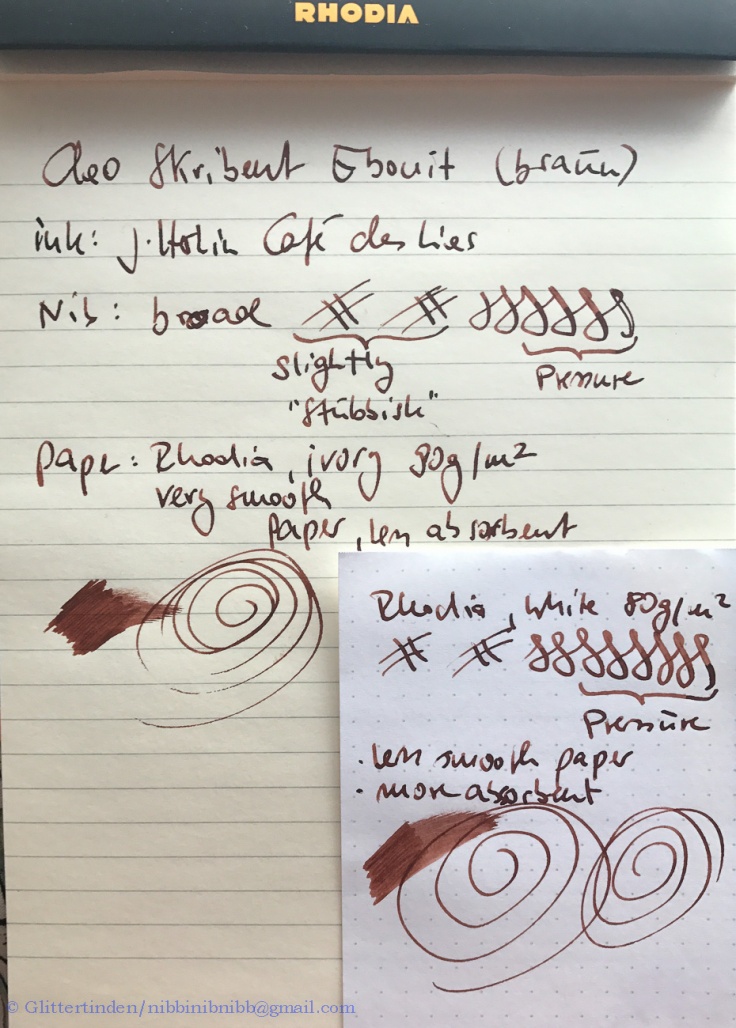
What I really love is the grinding of the broad nib which is slightly stubbish (see image above). This gives the handwriting a bit more character. I like such things. What you not should expect ist flex by any means. The nib is quite stiff and allows not much line variation under pressure. The stiffness is comparable to other modern nibs from various brands (MB 146 or Pelikan M800). Other available nib grades are F and M (no obliques or italics).
Overall
Well, for a couple of hundred bucks you could expect something serious! And I must say, you get something serious. The nib is well tuned, not too wet. It is slightly stubbish – don’t expect this on a medium nib from this company! Technically, I have no complains, the only thing I would have liked better is the filling mechanism. The endcap which needs to be removeed is just inconvenient. Designwise I have no complain neither, but this is in the eye of the beholder. Take in mind, the section is on the slimmer side of the spectrum.











































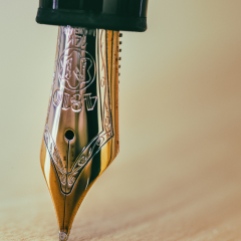









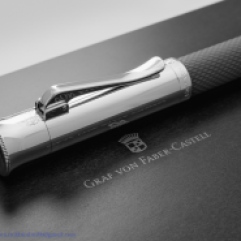
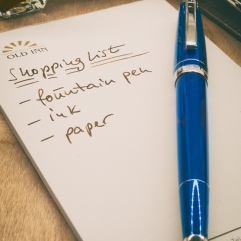


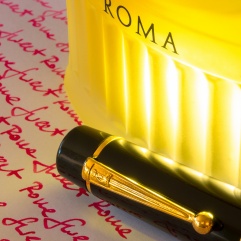



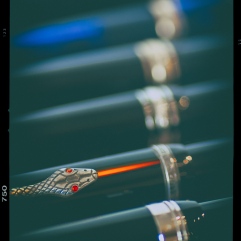


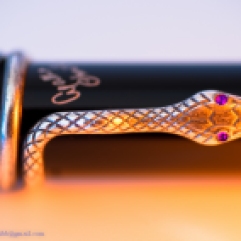





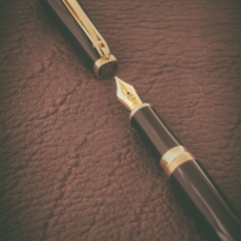












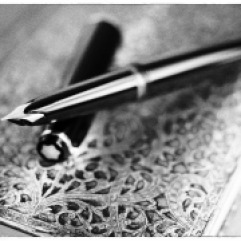



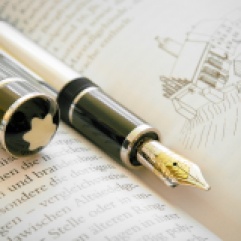

A nice review. There are not too many reviews of Cleo Skribent pens. I am a big fan of the Classic range and have one with a steel nib and one with gold, both reviewed on my blog.
LikeLiked by 1 person
Thanks for the kind comment! Comes in addition that you are the very first one who commented 🙂 Thanks again.
Yes, actually there are not much reviews of the Cleos in the web. I cannot say that I overly adore these pens, but they are sort of underrated (by their underrepresentation in the web). On fountainpennetwork are a couple of reviews, though!
Have a nice evening or day, dependent on your time zone …
LikeLiked by 1 person
Thank you for your reply. I am in London UK. Best wishes with your blog.
LikeLiked by 1 person